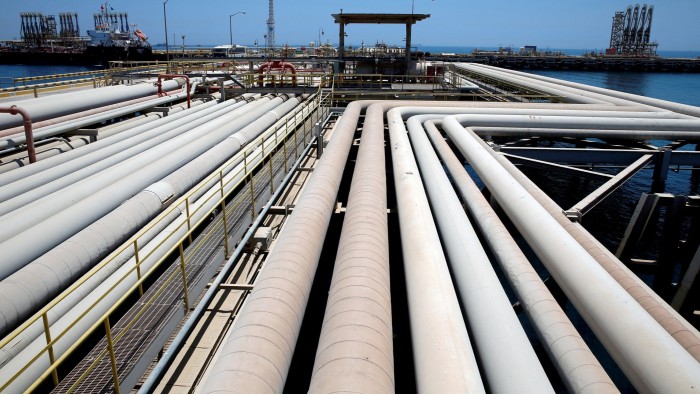Stay informed with free updates
Simply sign up to the Oil myFT Digest — delivered directly to your inbox.
Growth in oil demand is expected to slow sharply this year because of the negative impact of US tariffs on trade, the International Energy Agency has warned in its first forecast since Donald Trump’s “liberation day” announcement.
The Paris-based agency cut its expectations for oil demand growth this year by about a third from 1.03mn barrels a day to 730,000 b/d and signalled that further downward revisions were possible depending on how the US president’s tariff programme evolved.
Roughly half of the anticipated 300,000 b/d decline would be due to reduced demand in the US and China, it said.
“While imports of oil, gas and refined products were given exemptions from the tariffs announced by the United States, concerns that the measures could stoke inflation, slow economic growth and intensify trade disputes weighed on oil prices,” the IEA said.
“With negotiations and countermeasures still ongoing, the situation is fluid and substantial risks remain.”
Prices for Brent crude, the global benchmark, dipped below $60 a barrel last week for the first time in four years as traders weighed the prospect of recessions before Trump pulled back, pausing some of the tariffs for 90 days pending negotiations.
Despite the pause, which helped Brent recover to $67.57 a barrel by Tuesday morning in London, the sharp escalation in trade tensions prompted the IEA to lower the economic growth assumptions that underpin its forecasts, it said.

As a result, annual demand growth was expected to slow further next year to 690,000 b/d “as lower oil prices only partly offset the weaker economic environment”, it said in its first forecast for 2026. In 2024, global demand grew by about 770,000 b/d to 102.8mn b/d, according to the IEA’s figures.
The unexpected decision of eight Opec+ members, led by Saudi Arabia, to increase output faster than expected from next month had added to the “downward spiral in oil prices” in the first half of April, it said.
However, the impact on supply was likely to be “much smaller” than the announced increase of 411,000 b/d, as several Opec+ members, including Kazakhstan, the United Arab Emirates and Iraq, were already producing well above their targets, the agency added.
Opec also cut its oil demand forecast for 2025 this week but only by 100,000 b/d. The cartel expects global demand to grow by 1.3mn b/d this year to an average of 105.05mn b/d, it said in its own monthly report published on Monday.
The drop in prices due to weaker demand would have the biggest impact in the US shale patch, where producers need average prices of at least $65 a barrel to drill new shale oil wells, the IEA said, citing the latest survey by the Federal Reserve Bank of Dallas in Texas.
Trump’s tariffs may also make it more expensive to buy steel and equipment, further discouraging US drilling, it added, as it revised down anticipated growth in US oil production this year by 150,000 b/d to 490,000 b/d.
In total, global oil production was likely to grow by 1.2mn b/d this year, down from a previous forecast of 1.46mn b/d due to the expected slowdown in US shale activity and reduced supply from Venezuela due to the stricter enforcement of US sanctions.



